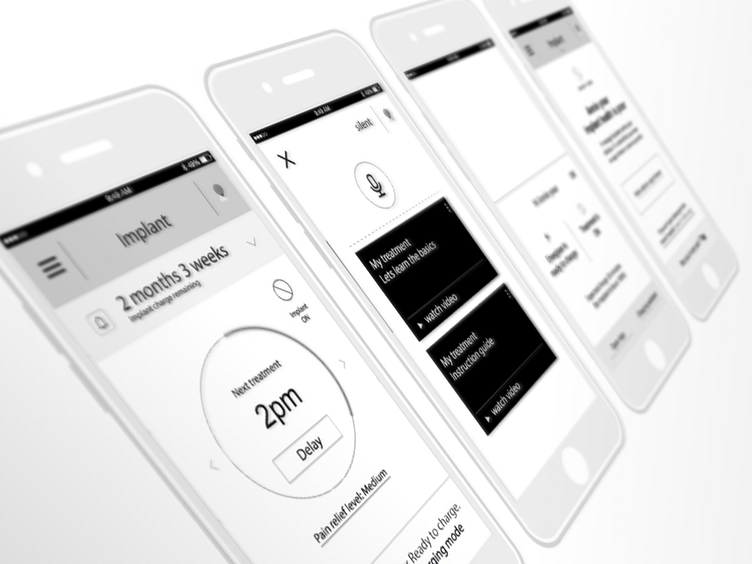McLaren healthcare neuromodulation project
Some of Stage 02 wireframes. From low fidelity (i.e. sketched) to higher fidelity (like the ones here) were used not only for different types of tests but also as a way to communicate and translate requirements quickly between the research team, PMs, industrial designers and of course the UX/UI designers.
It's definitely interesting to look back and see how the iterative funnel impacted the process. To see how many of our early assumptions were changed and filtered by tests as well as the ones that managed to carry over from stage to stage, from iteration to iteration (honestly, very few of the very first assumptions carried over until the final stages, which means that both research and an evidence based approach actually works to minimise risk of delivering an experience that doesn't fit the actual needs and expectations).
This is part of a concept for a McLaren healthcare project (partnership with Google and GSK). The project was focused on designing an entire ecosystem focused on body implant devices that will allow treatment of various medical conditions via neuromodulation.
Read more here: https://us.gsk.com/en-us/research/what-we-are-working-on/bioelectronics-research/bioelectronics-at-sxsw/
